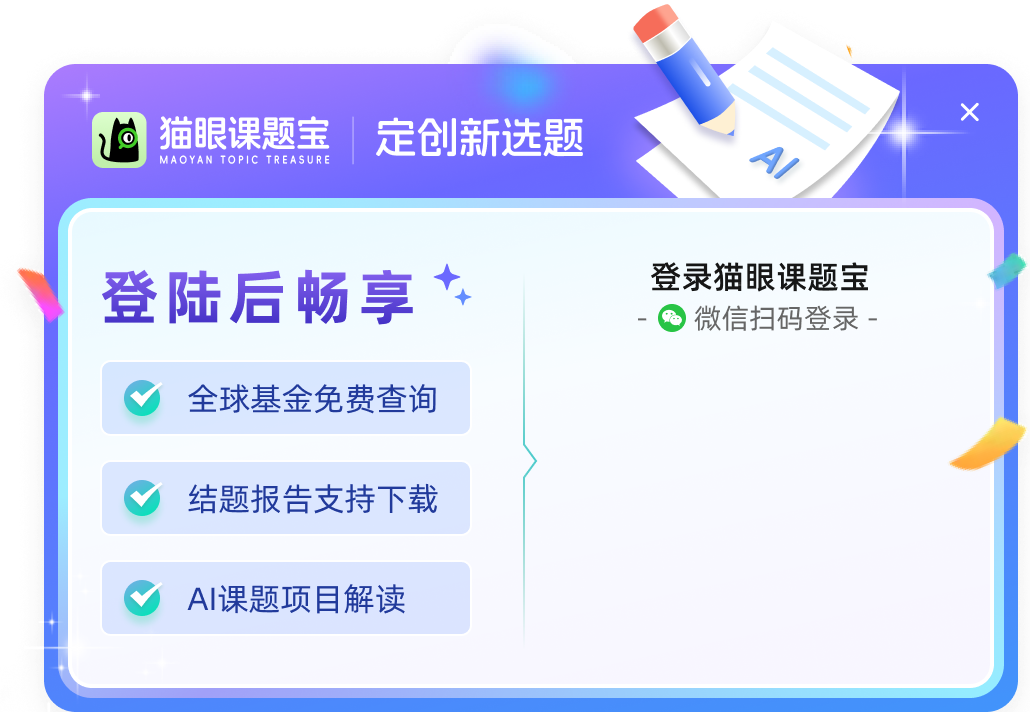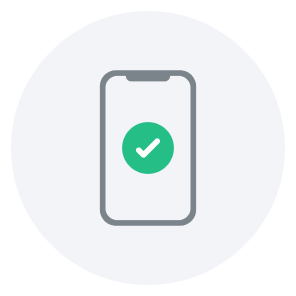
账号注册
您好~为了给您提供更精准的分析体验,需完善基础信息!所有信息100%保密,请放心填写!
24H内注册成功得【300喵币】,用于功能体验可用于智能选题、智能标书、文献分析等功能解锁。
24H内注册成功得【300喵币】,用于功能体验可用于智能选题、智能标书、文献分析等功能解锁。
*注:建议或bug反馈被采纳后获得{{feedback_mew_coin}}喵币奖励,请关注公众号模版消息通知
反馈成功
已收到您的反馈,我们会尽快处理。若内容被采纳你将获得{{feedback_mew_coin}}喵币奖励。请关注《猫眼课题宝》消息通知。

微信扫码添加小助理,回复“调研”
领取调研问卷
领取调研问卷
首次添加还可额外获得
{{customer_mew_coin}}喵币奖励哦!
{{customer_mew_coin}}喵币奖励哦!
完成问卷填写,立得{{question_mew_coin}}喵币奖励




7天猫会员
有效期至:{{dayjs(userInfo.membership_time * 1000).format('YYYY-MM-DD HH:mm')}}
已送您“7天会员体验卡+500喵币”
次数升级
享智能标书等多功能月解锁次数1次
10次
优享折扣
获会员期内充值喵币
8折等3大折扣
开心收下
{{userInfo?.nickname}}
{{vipStr}}

猫会员
(全方位提升课题决策能力)
喵币充值
团购
3人起团购

{{item.name}}
¥
{{item.price}}
{{item.everyDay}}元/天
限时加赠
{{item.additional}}喵币
自定义充值
(充值喵币为500的整倍数,0.1元/喵币)
成为会员立省{{item.price - item.membership_discount_price}}元会员已省{{item.discount_price}}元
{{item.total_coin}}
喵币
¥ {{item.price}}
会员专属
升级猫会员:购买喵币享
8
折优惠
免费领最高 6W
喵币
{{qrCodeError}}
请先阅读
服务协议并同意
服务协议并同意
扫码添加「专属客服」
了解团购优惠方案
了解团购优惠方案
客服在线时间:工作日9:00-18:00
¥
{{currentInfo?.price}}
{{isVip ? '已省' : '立省'}}{{currentInfo?.discount_price}}元
支持:
支付宝/
微信
请阅读并同意《猫眼课题宝服务协议》
*购买后不支持退
升级会员
HOT

智能选题
HOT

智能标书

基金检索
PDF

结题报告下载

立项课题分析

学科趋势分析
NEW

文献分析

科研课程
·查看权益对比·
返回开通
会员权益对比
| 权益分类 | 功能权益 | 普通用户 |  {{item.name}}会员
{{item.name}}会员
| |
|---|---|---|---|---|
| {{category.name}} | {{benefitItem.name}} 服务用户 {{benefitItem.user}} 权益介绍
{{benefitItem.name}}
|

·恭喜会员开通成功·
·喵币已发放到您的账户中·
会员有效期至{{userInfo.membership_time ? dayjs(userInfo.membership_time * 1000).format('YYYY.MM.DD') : ''}}
您可以在【喵币中心】查看金额和消费记录
- 微信扫一扫 -
请添加您的「专属会员管家」
提供专属会员服务
提供专属会员服务



